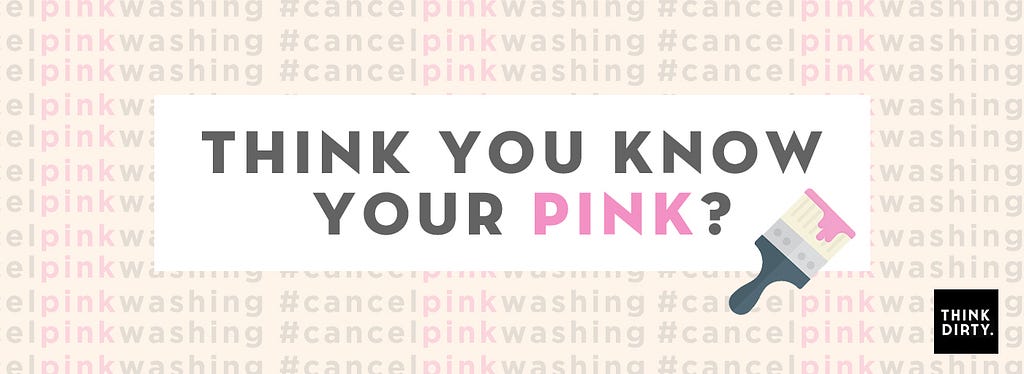
Throughout Breast Cancer Prevention Month you may have heard the term pinkwashing. While you may assume that all products that don the pink ribbon actually support legitimate breast cancer organizations, that is not the case. So what is pinkwashing and how can you avoid falling prey to it?
Let’s begin with the history of the pink ribbon. Did you know that the original ribbon was not really pink, it was peach! Charlotte Haley created the ribbons in 1991. Her mother, grandmother, and daughter all battled breast cancer during their lives. She would attach the ribbons to a postcard that called out the National Cancer Institute for only delegating 5% of their $1.8 billion budget to cancer prevention. She handed out the cards herself and mailed them to public figures. Eventually, when the ribbons started to catch on, the editor-in-chief of Self Magazine, along with the senior VP of Estée Lauder, reached out. They were interested in using her ribbon in their campaigns. Charlotte refused — corporate support was not what she wanted. Her idea, however, was used anyways, and the colour was altered for legal reasons. It became what is now the most well-known symbol for breast cancer — the pink ribbon.
We’ve all seen it before — pinkwashing is essentially when companies use the pink ribbon or the colour pink to promote their products or themselves. Oftentimes these companies don’t contribute to breast cancer prevention. Some brands go so far as to exacerbate the issue by using the pink ribbon to market products that contain carcinogenic ingredients.
There has been controversy regarding this in the past, especially when it comes to breast cancer organizations actively partnering with companies that either directly or indirectly contribute to the issue. The largest breast cancer organization in the world, Susan G. Komen, often partners with corporations who promote the organization on their products and often donate portions of the proceeds to the foundation. In the past, these corporate sponsors have included oilfield services giant Baker Hughes and Ford Motor Company. Baker Hughes makes industrial products used for fossil fuel drilling and fracking — the process of which actively uses carcinogens. The chemicals used in the automotive plastics industry have been tied to increased rates of breast cancer among female employees. These are just a couple of examples of the hypocritical and harmful nature of pinkwashing.
Throughout the years, we’ve discussed the issue of Pinkwashing and the negative consequences it can have on health and the Breast Cancer Prevention movement. We wanted to revisit it this month because not only is it Breast Cancer Prevention Month, it’s also the anniversary of Think Dirty! Think Dirty was founded in this month seven years ago with these ideas in mind. Our founder Lily Tse created Think Dirty because she wanted people to know about the chemicals that we potentially expose ourselves to through personal care and household products. As you know if you use the Think Dirty App, harmful ingredients and chemicals in products can contribute to carcinogenic exposures that can lead to cancer.
Pinkwashing 101 was originally published in Think Dirty on Medium, where people are continuing the conversation by highlighting and responding to this story.